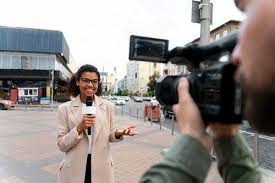One can learn a significant deal from reading and on the job training. Nothing like the latter when it comes to a field like journalism

Someone shared -- perhaps cynically -- the offer from Arnab Goswami's Republic TV to train students in journalism. The message simply said: "Republic announced: School of Journalism. Applications open now!" Someone cynical forwarded a message which read: "This is like the Veerappan School of Wildlife Conservation."
Given Goswami's tryst with journalism, and the way he has forever changed the field of TV journalism in India, this school is not something one could easily recommend.
A quick search through Google suggests (open to correction) that the total fee for the Republic School of Journalism's (RSJ) eleventh month diploma programme is ₹6,00,000. That is, rupees six lakhs only. We're told: "This fee covers all aspects of the 11-month programme, including live newsroom training, studio sessions, faculty mentorship, masterclasses, campus infrastructure, and learning resources. The fee can also be paid in installments for added flexibility."
This makes one wonder, and brings us to the point -- leave aside Arnab, are we doing enough to build our next generation of journalists? This issue is often bemoaned at journo gatherings, including in Goa. But little seems to be getting done to actually make a difference here.
Today, there are a couple of Bachelor's and post-grad diploma courses in Journalism or Mass Comm in Goa. But the State that gave the world Frank Moraes, Armand de Souza (an early Goan editor in 20th century Ceylon), Anthony Mascarenhas (whose reporting on East Pakistan reshaped the subcontinent, with implications even today) and others, has no Masters' degree in the field. It doesn't have a dedicated journalism school either.
Now, that brings us to a more fundamental point: should journalism be studied, at all?
It probably depends on the type of the course, its duration, the price-tag it comes at, and how much of productive learning actually goes on there. Also the 'opportunity cost' (lost productivity) that attending the course would imply, for the student.
When I was 19 and joined my first journalism job, there was no training or courses at all available in Goa. The job -- initially complex and a little confusing because one didn't understand it -- turned enjoyable in a short while, but I was consciously aware of the lack of formal qualifications. In fact, I didn't even had an Arts degree, and hadn't studied English for half a decade, being a student of Commerce and Economics myself.
There were few options. All one could do that that time, was to sift through the limited number of journalism books, then available at the old Central Library premises, in the heart of town. This helped understand the field. Only a bit.
Later, I got a chance to attend two courses. Both overseas and both on scholarship. These were excellent. One spanned 90 days, another of a fortnight.
Since our costs (a substantial sum) were taken care of by the scholarship, I took the training in Berlin, Germany, very seriously. During that period, I must have read or speed-browsed through a hundred books in 90 days! The Internationales Institut für Journalismus had an excellent library.
In the latter, it was the early days of the Internet, 1998. So one managed to access a whole world of cyberspace through high speed connectivity (in Sweden). That was quite a learning experience in itself.
Both clearly made me much better than what I had earlier been... So yes, depending on the course, price, time-commitment, opportunity costs, etc, one can learn. There are other easier-to-access, open to almost all, courses available too. One can learn a lot from these too.
In our time, there were no correspondence MA degrees in journalism. The University of Mysore had a full-time course, and it was tough to take a break in one's job. But there was an IGNOU diploma on Creative Writing in English. It cost only Rs 3,000 then, and probably has not become much costlier since. Didn't complete the course, but found it extremely useful in terms of the study notes it gave me. IGNOU (Indira Gandhi National Open University) courses then seemed to be quite thorough. These offered a kind of knowledge-for-knowledge-sake activity. It needed quite a lot of home and self-study, but it also imparted a good amount of knowledge to any serious student.
Bombay University sometime in 1984 or 1985 held a two or three-day course in photography. While it was far from sufficient, it did help to pick up some hard-to-then-understand concepts. Likewise, a short course by artist Hari Shirohi in the same field was also very useful.
At the end of the day, I think it all boils down to (i) what you're paying for it (ii) the first includes both money and time (iii) what you're getting from it (iv) how encouraging and supportive the faculty or trainers are... The quality of the course doesn't matter as much, as a curious student can use anything as a springboard to learn. Including from other fellow-students.
One can learn a significant deal from reading too, and, of course, on the job training. Nothing like the latter when it comes to a field like journalism. But reading does fill in the gaps, and helped us, in those pre-Internet times, to get 'teachers' from across the globe, while seated in tiny Goa.
These days, journalism educators in Goa say students are more keen to move into the audio-visual (read: glamorous TV) segment of the media. Or advertising, where all the big bucks are. Maybe the night-shifts and other aspects of print journalism can seem like hard work and non-fun! But this generation doesn't know what they're missing out. They don't know how they could really contribute to the debate. If I had to start my career from the scratch, all over again, from tomorrow, it would have been print.